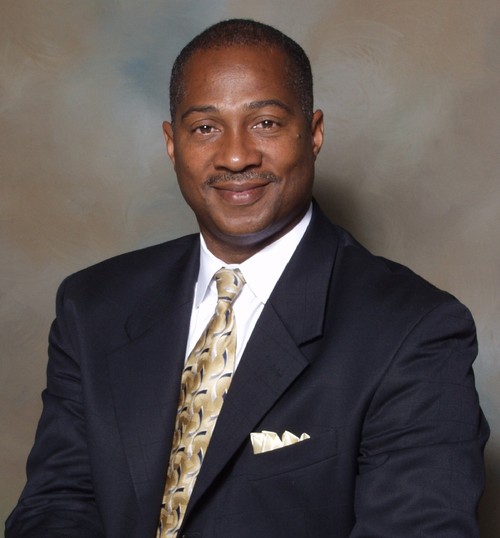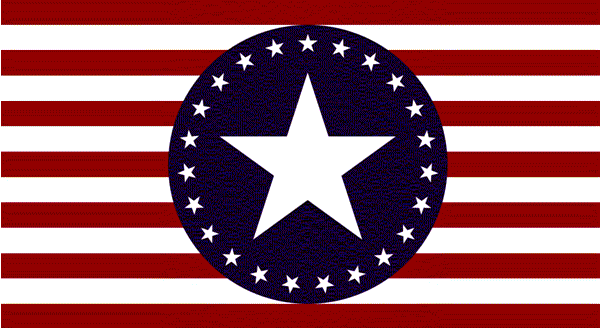Field Marshall Bradley
Veteran
Sound like a cac, act like a cac, smell like a cac, thats a cac.
ok
Sound like a cac, act like a cac, smell like a cac, thats a cac.
Who designed the ados flag I been meaning to ask?
The number of stars, does it mean anything?
That will be next shoe to drop, right now we have this "new black media" wave spearheaded with the "ADOS" name by Yvette, but you have others like Jason Black, PBT, Tariq, etc... I just hope they all stay on code with each other because really there is no "leader".. It's just a conglomerate of minds which it should be...Some people you start with, you won't finish with...When Tariq decides to get on his grind, he stays winning. My own concern based on the past is: when a leader or even figurehead goes away or goes awry, then the movement collapses and goes into disarray. Hopefully, this go around black folk focus on the message and not celebritize the messenger. The Moses Complex only gets you so far.
I would like to know who as well. I've never seen that shyt until today and it looks too close to the American flag for my liking. If brehs want to use it. They can use it. But I not flying no flag that looks so close to an American flag.



When was the flag made and why did they fashion it after the racist American flag? I also do not like how "Breed" is constantly use and bolded. Call it like it is. Raped and sexually abused and treated like property. I honestly don't see that as something to be proud of. Why does Breeding need to be highlighted like its something to mention all the time. Say it a few times, cool. But the whole breed this and breed that gives off slave fetish vibes.Norris Shelton & Dr. Gerald Higginbotham



Descendants of American Slaves are the offspring of the original human beings that were captured in Africa, brought to America and bred to be slaves. During slavery, the offspring of these human beings where considered animals and classified as livestock. Americans selectively BRED slaves to create more profit for owners the same as they did with farm animals. By law, American Slaves were chattel. They were mistreated and punished in barbarous and brutal fashion with no consideration to age or sex. The original America Slaves were stripped of any vestige of past existence. This included clothes, language, religion, education and social relationship. Slaves were property. They were reproduced by whites and given an entirely new identity. Due to ‘Slave Sales,’ American Slave families where split up and sent all across America. Babies didn’t belong to the natural parents. They belonged to the “master.” Baby slaves had no grandparents. They were separated at birth and sold away from family members. All this for financial gain. ASI is petitioning that the original slaves, which are now identified as “African Americans,” be recognized as Descendants of American Slaves and awarded their appropriate birthright.
Ethnicity is a term that describes a people who identify with each other based on a common, cultural, national and social experience. Being 'black' from Africa and being black from the Caribbean is not the same thing as being born and BRED in American to be slaves. DAS are unique in many ways; the first being that they were intentionally BRED in America. The word BRED says it all: American Slaves were kidnapped; they were selectively BRED in America; they were enslaved in America; and then they were forced to work for white Americans hundreds of years against their will.
SUMMARY FACTS:
• Slaves were born and bred in America and are a unique culture unto themselves.
• Slaves were brought to America unwillingly in chains.
• African Americans emigrated off their own free will.
• Slaves built AMERICA against their will.
• Slaves were compensated with rape, torture, and lynching’s for 400 years.
• Slaves were treated as subhuman in America for over 400 years.
• Slaves were never paid or reimbursed for their labour.
@Peter Vecsey
MOST Black Americans - learned about Garvey due to his Mail Fraud charges -- and then rallied behind him in an effort to help him.
Again, this is not to disrespect Garvey or his legacy -- just giving credit to the Black Immigrants who really were the driving power and supporters of UNIA and Garvey.
“Garvey was the first man on a mass scale and level to give millions of Negroes a sense of dignity and destiny and make the Negro feel he was somebody,” Martin Luther King Jr. once said. Yet until the federal government’s 1922 indictment on mail fraud charges and his 1923 trial, only a smattering of African Americans took a major interest in the man who many would come to refer to as the “Black Moses,” Hill found.More of the findings:
Before that time, Garvey’s followers were largely fellow Caribbean nationals here and abroad. Hill said the UNIA, which Garvey first founded in Jamaica two years before coming to the U.S. and which he launched in New York in 1917, “took off like a rocket” between the November 1918 armistice ending World War I and the UNIA’s first major gathering in August 1920, which drew some 20,000 participants to New York’s Madison Square Garden.
The bulk of UNIA members and followers in this critical period were immigrants from British colonies in the Caribbean, who, bitterly disillusioned with the experience of British racism after patriotically serving in World War I, turned to Garvey and the UNIA. Many had worked on the construction of the Panama Canal and, following its completion in 1914, had flowed into the United States. Some 150,000 Caribbean natives are estimated to have worked on the building of the canal.
Caribbean nationals not only constituted Garvey’s main body of followers, but they served as the primary vectors for disseminating the message of the UNIA. Within the U.S., Caribbean immigrants spread Garvey’s reach by introducing his message to widely scattered communities outside of large African American population centres, including Detroit; Pittsburgh; Newport News, Va.; New Orleans; Charleston, S.C.; New Madrid, Mo.; Jacksonville, Fla.; Miami; Los Angeles; and Riverside, Calif. Meanwhile, Caribbean nationals spread Garvey’s message throughout the West Indies and the countries of Central and South America, where they had been employed on the Panama Canal and on the railroads and banana plantations of the United Fruit Company, a U.S. conglomerate that specialized in the tropical fruit trade.
“Without the immigrant base, it seems unlikely that the Garvey movement would ever have arisen on the scale that it did nor as rapidly as it did,” Hill said. “The two were symbiotic.”
In fact, the UNIA’s basic organizational structure was modeled on the “friendly societies” of the Caribbean. Caribbean immigrants brought these popular fellowship organizations with them to the United States, Hill found. Between the period of slave emancipation in the 1830s and World War II, these “friendly societies” formed the organizational bedrock of Caribbean society wherever these immigrants settled. Offering funeral and sick benefits, the societies served as gathering places, melding social and cultural needs with political organization. To attract followers, the UNIA adopted the same roles and became practically indistinguishable from these ethnic fellowship organizations.
“No matter where they lived, large numbers of immigrants from the Caribbean identified very strongly with the UNIA and with Garvey because the UNIA became a way of maintaining their cultural identity and connection with the rest of the Caribbean,” Hill said. As a result, Garvey’s efforts helped forge a common ethnic identity for immigrants from Jamaica, Barbados, Trinidad, Antigua, Grenada, St. Vincent, St Lucia, the English-speaking Virgin Islands and the Bahamas.
Garvey could be considered the exception really even tho not ados he stated booker t and Sojourner truth was his hero's
When was the flag made and why did they fashion it after the racist American flag? I also do not like how "Breed" is constantly use and bolded. Call it like it is. Raped and sexually abused and treated like property. I honestly don't see that as something to be proud of. Why does Breeding need to be highlighted like its something to mention all the time. Say it a few times, cool. But the whole breed this and breed that gives off slave fetish vibes.


That doesn't make the American flag less racist. and the design is way too close to the very racist version for me to use. But if you want to use it. I dont care. I just dont plan to use it ever for my personal preference.This was the flag that used by the Slaves Enlisting in the Union Army of the Civil War.
It's in honor of them.


That doesn't make the American flag less racist. and the design is way too close to the very racist version for me to use. But if you want to use it. I dont care. I just dont plan to use it ever for my personal preference.

Breh, it simular to the racist one that white people in Florida love to display. But ok, call me a troll.I'm getting troll vibes from you but whatever.
It took this to open your eyes? What exactly did you see that was great about Democrats and liberals before?I might not agree with everything but this movement has definitely opened my eyes about democrats/liberals.